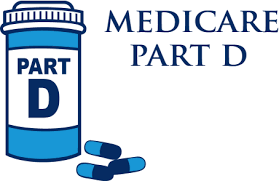Enforcement of the strict standards of fiduciary conduct set forth in the Employee Retirement Income Security Act (ERISA) has traditionally been reserved for retirement plan sponsors. However, a new class action lawsuit highlights the importance of employers’ adherence to their fiduciary duties when managing their group health plans.
The lawsuit, filed against Johnson & Johnson (J&J), alleges the company violated its ERISA fiduciary duties by mismanaging its prescription drug benefit, which cost the health plan and participants millions of dollars. It serves as a reminder to employers that they must prudently select and monitor plan service providers, such as pharmacy benefit managers (PBMs).
Although it is the first case of its kind, more fiduciary litigation involving the management of prescription drug benefits is expected as the PBM industry faces increasing scrutiny and new transparency laws provide employees with more information regarding health care costs.
Overview of Fiduciary Responsibilities
ERISA includes standards of conduct for those who manage employee benefit plans and their assets, who are called fiduciaries. Thus, understanding fiduciary responsibilities is essential for a group health plan’s security and compliance with the law. ERISA requires fiduciaries to discharge their duties with respect to employee benefit plans:
- Solely in the interest of plan participants and their beneficiaries;
- For the exclusive purpose of providing plan benefits or for defraying reasonable expenses of plan administration;
- With the care, skill, prudence and diligence that a prudent person in similar circumstances would use;
- By diversifying the plan’s investments to minimize the risk of large losses; and
- In accordance with the plan’s documents (unless inconsistent with ERISA).
The duty to act prudently is one of a fiduciary’s central responsibilities. As highlighted in the J&J lawsuit, ERISA requires fiduciaries to prudently select and monitor plan service providers while considering various factors, including the service provider’s fees and expenses.
Employer Compliance Tips
In light of health plan price transparency laws and increased scrutiny of the PBM industry, it is necessary for group health plan fiduciaries to reevaluate their fiduciary compliance to limit their liability. One way fiduciaries can demonstrate that they have carried out their responsibilities properly is by documenting the processes used to carry out their fiduciary responsibilities. The following tips can be used to ensure compliance:
- Identify plan fiduciaries and consider forming a fiduciary committee. Have you identified your plan fiduciaries in the plan document, and are they clear about the extent of their responsibilities?
- Schedule routine training and meetings. Have you established ongoing training to ensure plan fiduciaries understand their obligations? Do plan fiduciaries meet regularly? Is there a process for recording meeting minutes?
- Evaluate third-party service providers. If you are hiring third-party service providers, have you looked at several providers, given each potential provider the same information, and examined whether the fees are reasonable for the services provided? Have you explored market alternatives?
- Revisit existing third-party agreements. Have you documented the hiring process of third-party service providers and detailed the plan fees that may apply? Have you enumerated contractual obligations regarding compliance with health plan transparency provisions?
- Monitor service providers. Are you prepared to monitor your plan’s service providers?
- Establish and document claims procedures. Does your plan have a reasonable claims procedure that plan fiduciaries follow? Are you prepared to support any decisions made regarding entitlement to plan benefits?
- Review plan documents. Have you reviewed your plan document in light of current plan operations and made necessary updates? After amending the plan, have you provided participants with an updated summary plan description or summary of material modifications?
- Establish a process for participant contributions. Are you aware of the schedule for depositing participant contributions and payments by participants to the plan and forwarding them to the insurance company? Have you made sure it complies with the law?
Health Plan Transparency
- Group health plans and issuers are subject to new requirements designed to increase health care price transparency, which come from final rules issued in 2020 and the Consolidated Appropriations Act of 2021.
- Most employers rely on their issuers, TPAs and other service providers to satisfy many of these requirements.
Employers should confirm that written agreements with their issuers, TPAs or other service providers are updated to address this compliance responsibility
Links and Resources
U.S. Department of Labor (DOL) resources:





